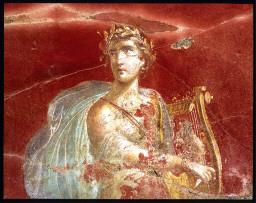Visitors to Stabiae, one of the most luxurious ancient Roman getaways, will be able to admire its frescoes on site for the first time since they were removed during excavations in the 18th century.
The original wall paintings of the Villa San Marco, the largest villa in Stabiae, are kept in the National Archaeological Museum of Naples.
But 22 photographic reproductions of the frescoes will return to adorn the walls of the house on Saturday.
Images of trees, seaside landscapes, cupids, swans and members of the powerful Julio-Claudian dynasty feature in the paintings of the villa, which covers about one square hectare.
The site encompasses a luxurious Roman home with its own set of baths, a large porticoed garden containing a pond, and a stunning view over the Bay of Naples.
Stabiae was among the towns buried in ash and cinder during the eruption of Mount Vesuvius in AD 79 but is often neglected in favour of its more famous neighbour, Pompeii.
However, a flurry of digs in recent years unearthing luxurious villas, exquisite art and everyday items have brought the once famous resort - a haven for wealthy Romans who built sumptuous villas overlooking the bay - back into the limelight.
All the Vesuvian archaeological sites - Pompeii, Herculaneum, Oplontis, Boscoreale and Stabiae - are set to remain open for Easter, and entrance will be free in the last week of March for Italy's annual Culture Week.












